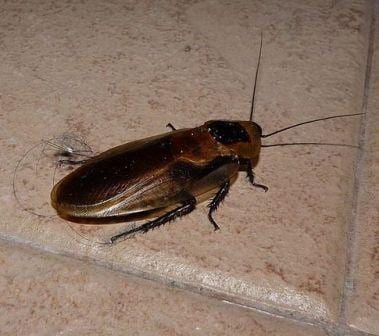Specimen of the Week: Week 126
By Emma-Louise Nicholls, on 10 March 2014
 This week’s specimen is a big fan of travel, loves its food, prefers to live in warm environments, enjoys hanging out in restaurants, and hates the cold with a passion. This is all a perfect description of myself. But don’t worry, given that this blog is set to include pictures of the specimen in question, I thought I’d spare you and make it about something else, a specimen with whom I happen to have a lot in common. This week’s Specimen of the Week is…
This week’s specimen is a big fan of travel, loves its food, prefers to live in warm environments, enjoys hanging out in restaurants, and hates the cold with a passion. This is all a perfect description of myself. But don’t worry, given that this blog is set to include pictures of the specimen in question, I thought I’d spare you and make it about something else, a specimen with whom I happen to have a lot in common. This week’s Specimen of the Week is…
**The American cockroach**
1) The fraudulently named American Cockroach, is not from America. Not originally. Experts believe it was introduced to the Americas from Africa. However it got there, its distribution is now worldwide. Much to the dismay of most people it seems. This particular critter was scuttling around the university until the Museum’s conservator got hold of it and decided to make an example of it to all future potential marauding insects. The American cockroach likes a nicely moist environment, though if a water source is nearby, they can live in more arid areas. You’ve all heard that cockroaches would survive a nuclear holocaust? Well, whether that’s true or not, they would have, at the very least, have had a hard time living in an ice age (a full on one, not the poor excuse for one that we’re in now) as they have a tendency to expire at temperatures below -10 degrees celsius. Their favourite hangouts, as you can imagine, are places such as restaurants, supermarkets and food processing buildings. In the USA, sighting an American cockroach is a sure thing if you venture in to the city sewer systems. Though why you would is your business.
2) There are many species of cockroach and they vary in size. A fully grown American cockroach will reach 3 cm in total body length. Which makes them smaller than the critters I used to see scuttling around previous universities late at night (workaholic). Both male and female cockroaches have wings but are only so-so in their flying skills. To sex a cockroach, as I’m sure you are wondering, the wings of a male are longer than its abdomen. A female’s wings are shorter and do not extend beyond the abdomen.
3) In the world of the American cockroach, the ladies attract the gents by producing a variety of smells. It’s more romantic sounding if I say ‘a variety of sex pheromones’. Once a male attends he will transfer sperm to her via a spermatophore, which is best described as a splodge of goo. Fertilised packets of eggs (oothecae), are dropped by the mother-to-be as quickly as a few hours, but may take up to four days. She uses saliva to glue the oothecae to a suitable surface in a high humidity environment, near a food source. Between nine and ten oothecae are normally laid at a time, with 14 to 16 eggs in each one. The time between hatching as larvae and developing into an adult cockroach is between 168 and 786 days, depending on the temperature of the environment. To emerge as a fully fledged adult, each individual must molt between ten and 13 times.
4) The American cockroach is not a fussy eater. They will more or less eat anything organic, not excluding each other. Dinner time comprises all the things you would expect such as bark, leaves, paper, card, wood, etc., but also includes ink, soap, flesh and other cockroaches – both dead and alive. Seriously, not fussy. Though they do have a predilection for fermenting food. When it comes to substances that cockroaches eat but cannot digest, cockroaches have a symbiotic relationship with a bacteria in the same way grazing animals like cows do.

A close up showing the beautiful colours of the American cockroach. (Image by Glueball, obtained from www.commons.wikimedia.org)
5) The American cockroach is listed as ‘harmful to humans’ by health authorities, primarily due to its tendency to be an accessory to disease transmission. Cockroaches will unwittingly feed on contaminated material and then pass it on to food destined for human consumption in warehouses and storerooms, etc. Apparently, cockroaches have been ascertained to be the fourth most common allergen, with between 50 and 60% of all atopic people (an inherited predisposition to hypersensitivity to particular allergens) and asthma sufferers showing an intense reaction to cockroach extract. Though I wonder if the experiments were corrected for psychological aversions?
Emma-Louise Nicholls is the Curatorial Assistant at the Grant Museum of Zoology
One Response to “Specimen of the Week: Week 126”
- 1
 Close
Close




[…] which is Spanish for “the lizard”. American alligators, unlike the pretender, the American cockroach, of last week, is only found in the Americas. Specifically Alabama, Arkansas, North & South Carolina, […]